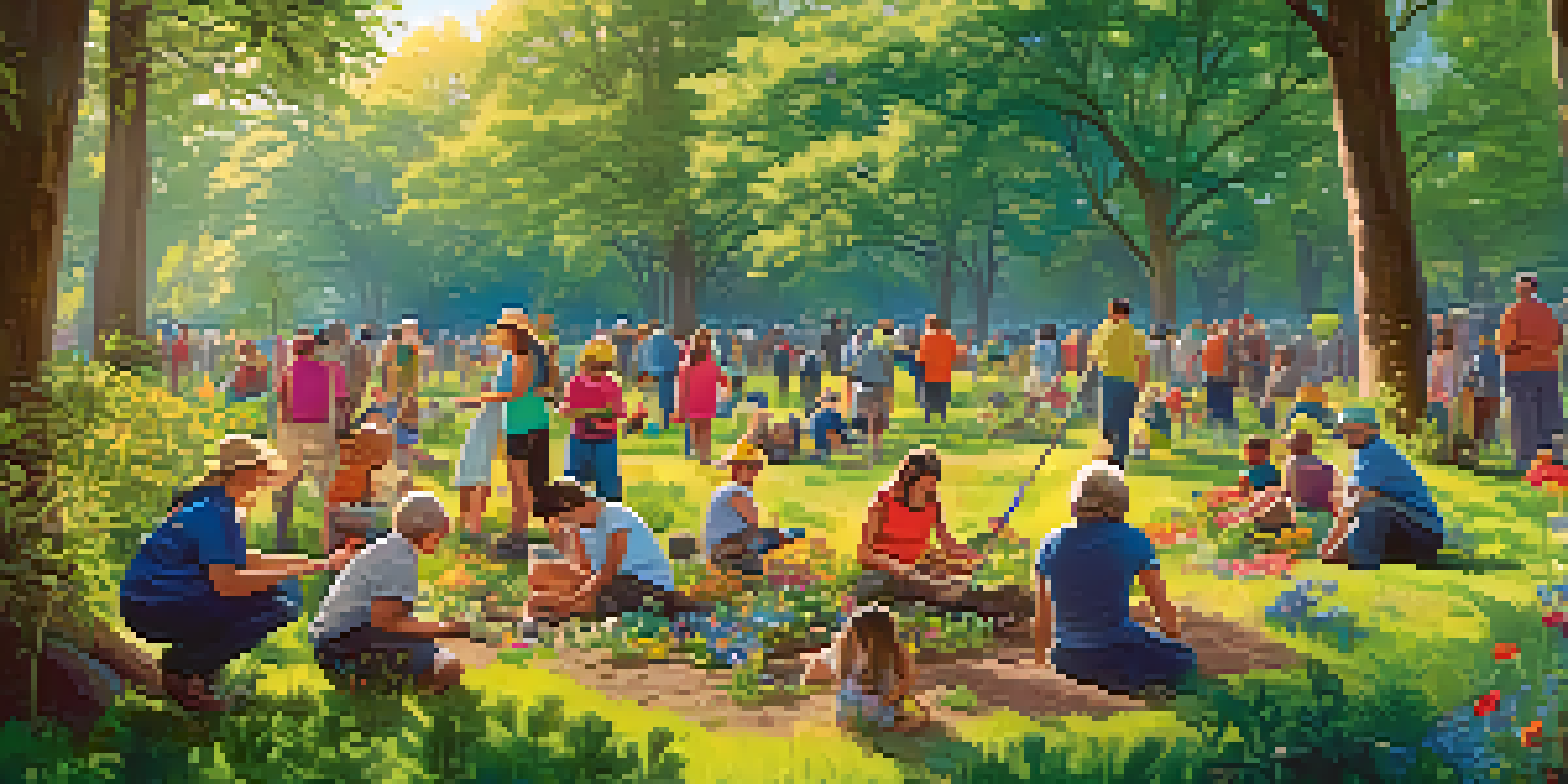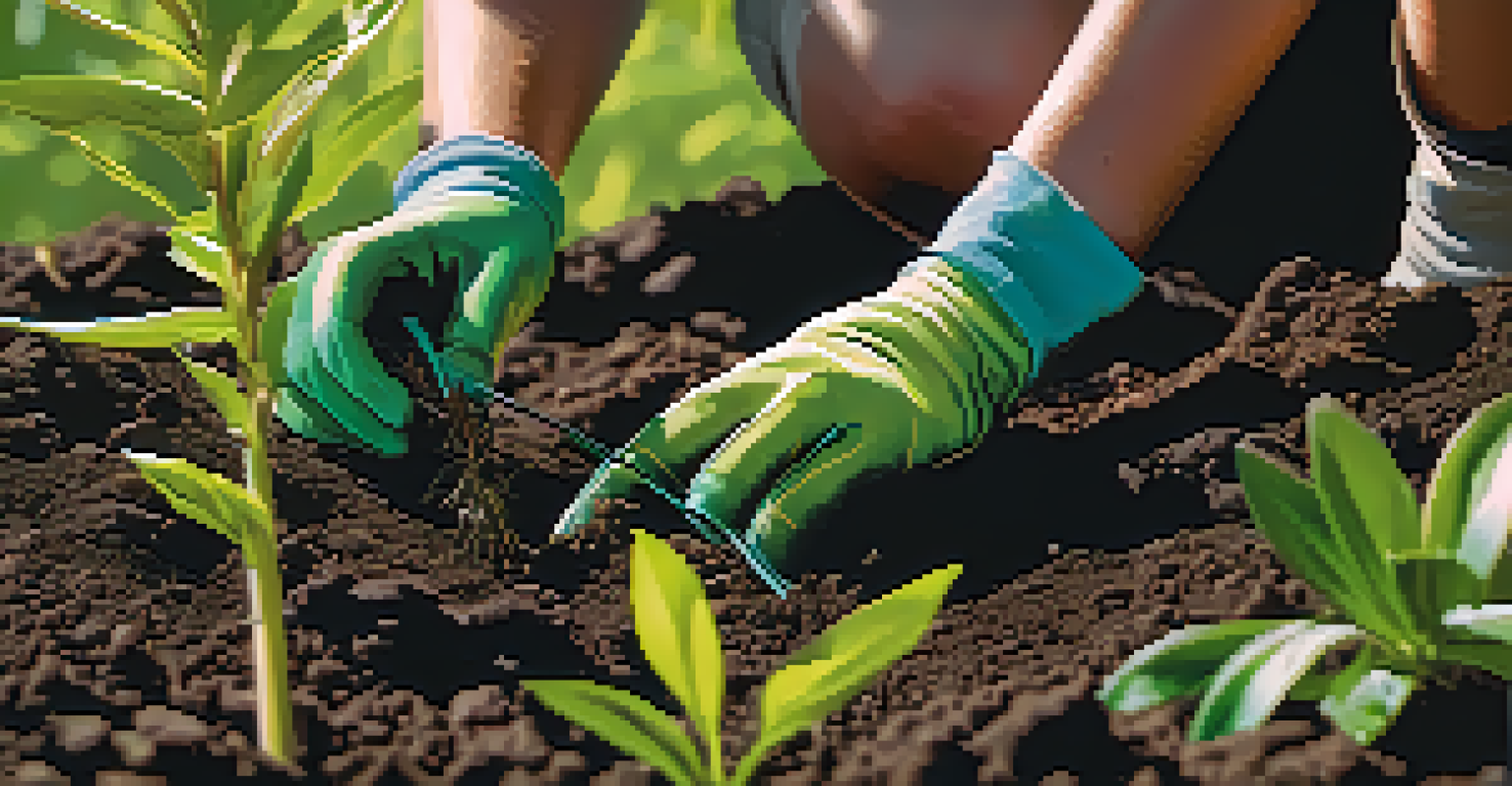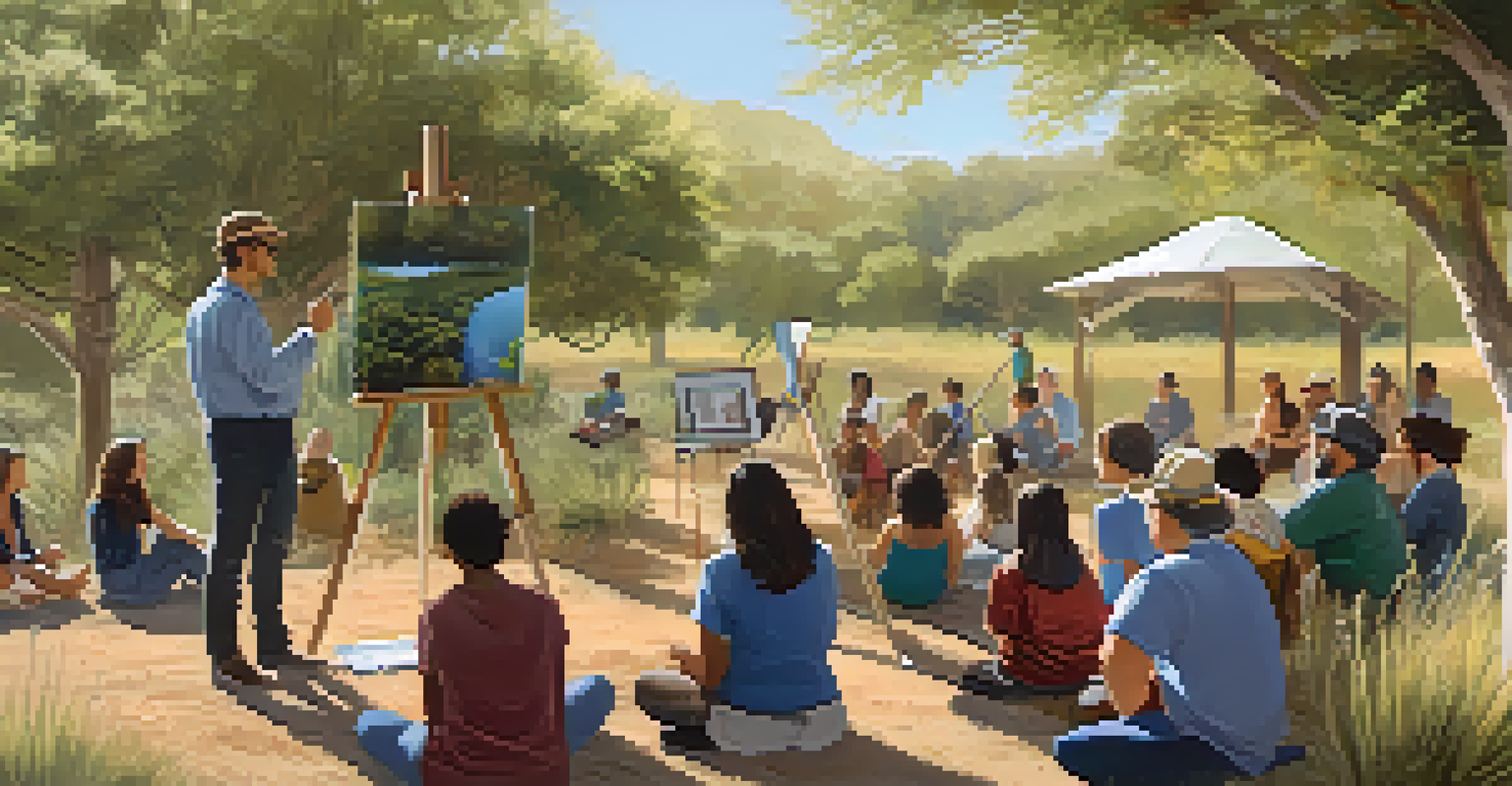Community Engagement in Austin's Habitat Restoration Projects

The Importance of Community Engagement in Restoration
Community engagement is vital for successful habitat restoration projects. It ensures that local voices are heard and that the restoration efforts reflect the needs and values of the community. In Austin, this involvement not only fosters a sense of ownership but also empowers residents to take an active role in preserving their natural surroundings.
The best way to find yourself is to lose yourself in the service of others.
When community members participate in habitat restoration, they often feel a deeper connection to their environment. This connection can lead to more sustainable practices as people become more aware of the ecological challenges faced by their local ecosystems. By working together, communities can create a collective impact that extends beyond individual efforts.
Moreover, engaging the community enhances educational opportunities, allowing residents to learn about native plants, wildlife, and the importance of biodiversity. Workshops and volunteer days foster a sense of camaraderie, creating lasting relationships among participants and strengthening community bonds.
Austin's Unique Environment and Habitat Needs
Austin's diverse ecosystems, from the Hill Country to the urban core, present unique challenges for habitat restoration. These ecosystems host a variety of species, many of which are threatened by urban development and invasive species. Understanding these specific needs is crucial for effective restoration efforts.

Local organizations, such as the Austin Parks Foundation, focus on restoring native habitats that support biodiversity. By prioritizing native species, these projects help create environments that are resilient to climate change and urban pressures. Community members can play a key role in identifying local species and understanding their ecological significance.
Community Engagement Drives Success
Active involvement of local residents in habitat restoration fosters a sense of ownership and enhances sustainability.
Involving the community in these endeavors not only raises awareness but also promotes stewardship. By learning about the native flora and fauna, residents become advocates for their preservation, ensuring that these habitats thrive for generations to come.
Successful Community-led Restoration Projects
Several successful community-led habitat restoration projects in Austin highlight the power of collective action. For instance, the Barton Creek Greenbelt project has brought together volunteers from all walks of life to restore trails and improve water quality. These efforts have transformed the area, making it more accessible and enjoyable for everyone.
We do not inherit the earth from our ancestors; we borrow it from our children.
Another notable initiative is the restoration of the Colorado River, where local residents participated in clean-up events and native planting days. These efforts not only improved the river's health but also fostered a sense of pride among participants. Seeing tangible results from their hard work encourages ongoing commitment to preservation.
These projects serve as inspiring examples of how communities can rally together for a common cause. They demonstrate that when people unite their efforts, they can make a significant difference in restoring and maintaining Austin's natural habitats.
Challenges in Community Engagement
Despite the successes, community engagement in habitat restoration is not without its challenges. Time constraints and competing priorities can make it difficult for individuals to participate consistently. Additionally, some community members may feel disconnected from ecological issues, limiting their involvement.
It's essential for organizations to address these barriers by creating flexible volunteer opportunities that accommodate various schedules. Offering different levels of engagement, from one-time events to ongoing projects, can help attract a broader audience. By making participation more accessible, more residents can contribute to these vital efforts.
Education Sparks Environmental Advocacy
Educational initiatives empower community members to understand and advocate for local ecosystems and biodiversity.
Furthermore, fostering a culture of inclusivity is crucial. Engaging diverse voices ensures that restoration projects reflect the community's needs and values, ultimately leading to more successful outcomes. Building trust and relationships within the community can help overcome these challenges.
The Role of Education in Engagement
Education plays a pivotal role in fostering community engagement in habitat restoration. By providing resources and support, local organizations can empower residents to become advocates for their environment. Workshops, informational sessions, and hands-on activities help demystify the restoration process and inspire action.
For instance, educational programs in schools can instill a sense of responsibility in younger generations. When children learn about the importance of native species and healthy ecosystems, they are more likely to carry that knowledge into adulthood. This generational impact can lead to a more environmentally conscious community.
Moreover, educational initiatives can bridge gaps in understanding, making ecological concepts accessible to everyone. By simplifying complex ideas and using relatable examples, community members can better appreciate their role in habitat restoration, leading to increased participation and support.
Utilizing Technology for Community Engagement
In today's digital age, technology plays an increasingly important role in community engagement for habitat restoration. Online platforms can facilitate communication, allowing organizations to reach a wider audience and share information in real-time. Social media, for example, can be a powerful tool for mobilizing community members and promoting events.
Apps and websites dedicated to environmental initiatives can also enhance participation. These tools can provide resources on local habitats, track volunteer hours, and even allow users to report invasive species. By leveraging technology, organizations can foster a sense of community while making it easier for individuals to engage.
Technology Enhances Participation Efforts
Leveraging digital platforms facilitates communication and engagement, making it easier for individuals to participate in restoration activities.
Furthermore, virtual events have become a popular way to reach those who may not be able to participate in person. Webinars and online workshops can educate and inspire without the barriers of travel or time constraints. This adaptability helps ensure that community engagement continues to thrive, regardless of circumstances.
Future Directions for Community Engagement
Looking ahead, the future of community engagement in habitat restoration in Austin is promising. As awareness of environmental issues grows, so does the potential for increased participation. Local organizations are continuously seeking innovative ways to involve residents and address emerging challenges in habitat preservation.
Collaboration between various stakeholders—such as city officials, non-profits, and community members—will be crucial. By working together, they can identify priorities and develop strategies that reflect the community's needs. This collaborative approach can lead to more effective and sustainable restoration efforts.

Ultimately, fostering a culture of engagement will require ongoing commitment and creativity. By harnessing the power of community, Austin can continue to restore its unique habitats, ensuring a vibrant and healthy environment for future generations.